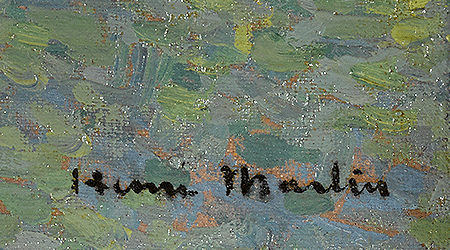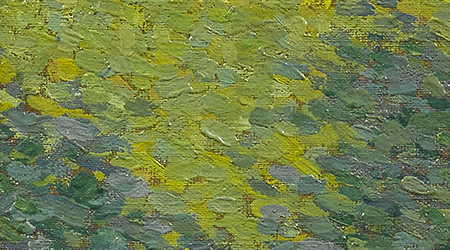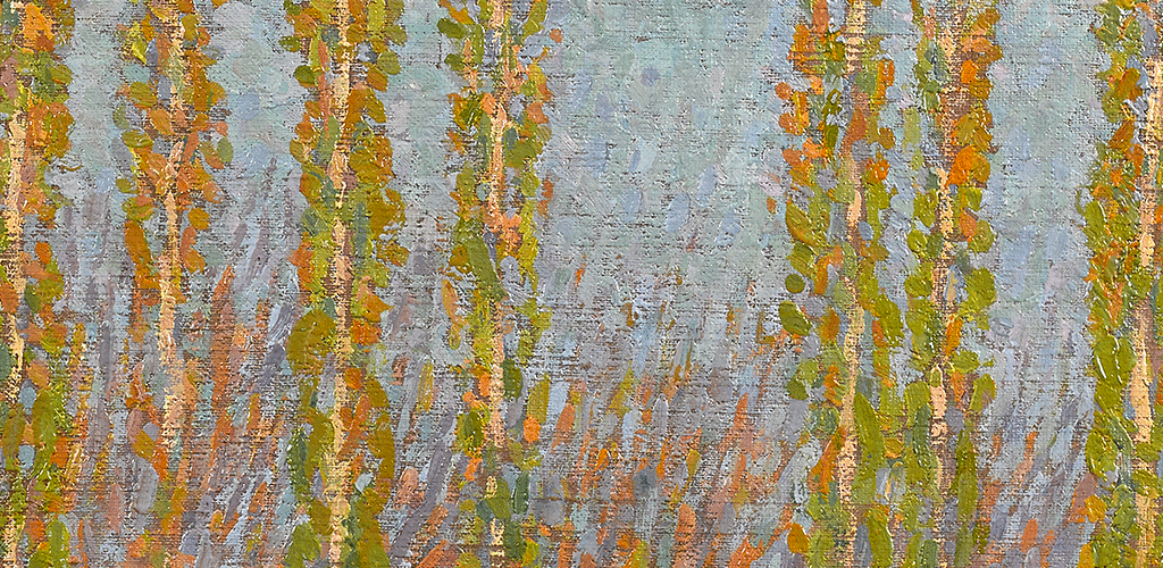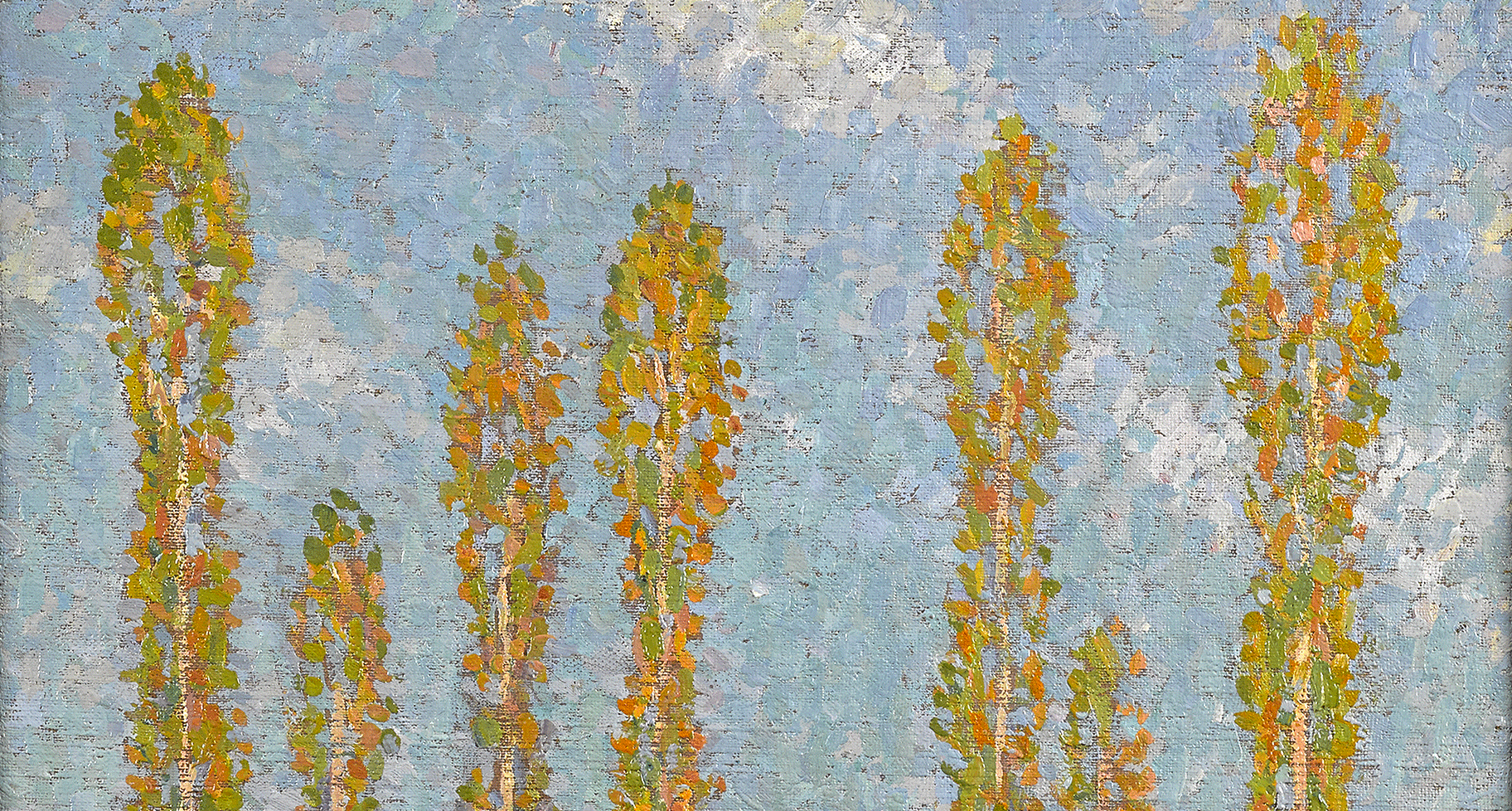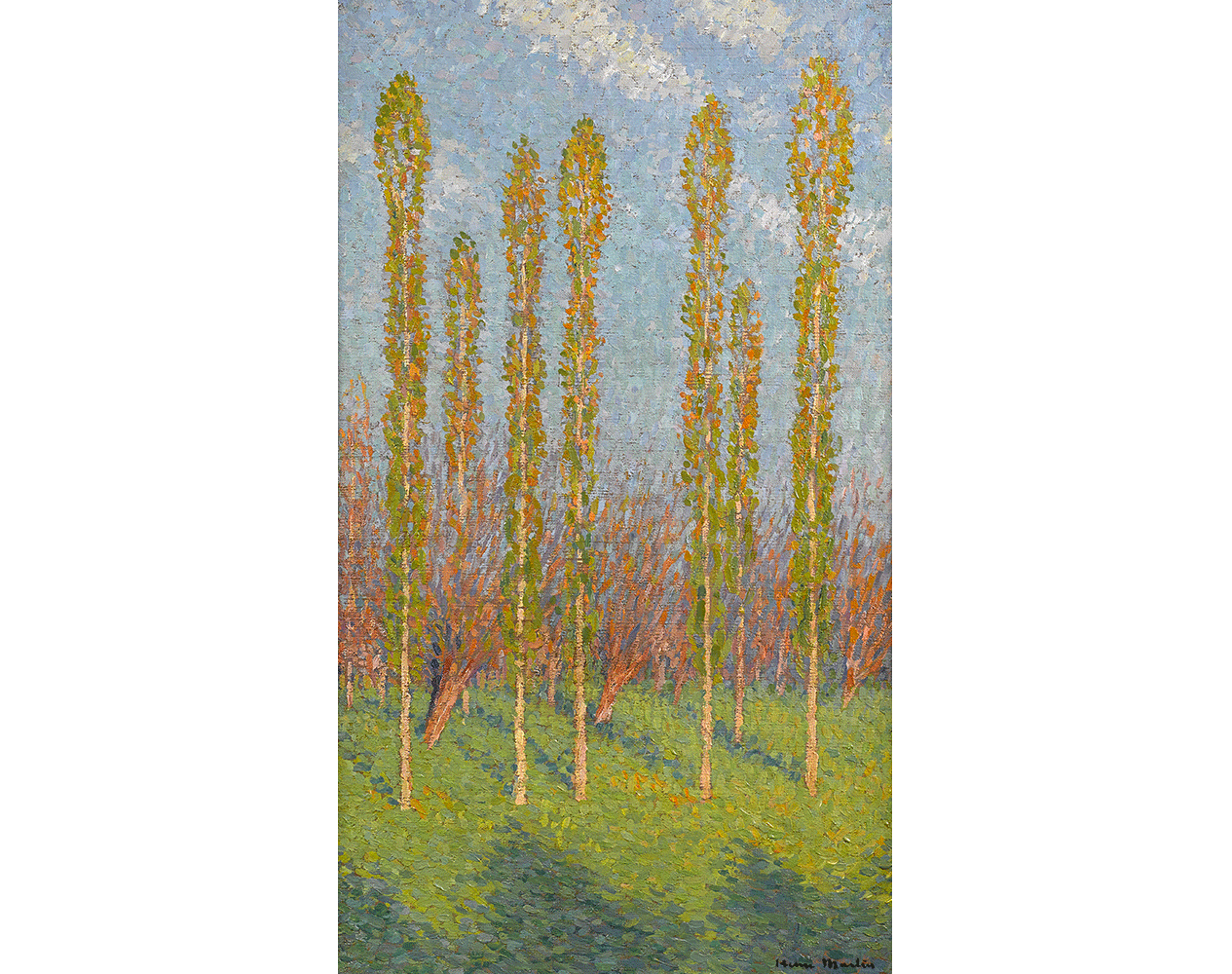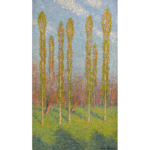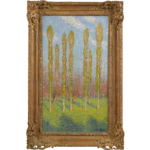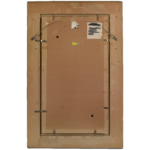Provenance
Wally Findlay Galleries, Inc., New York
Private collection, Waco, Texas, 1985
Sale: Sotheby’s, New York, 3 October 1990, lot 47
Private collection
Exhibitions
Acquired Images, Works from Waco Collections, Waco, Texas, The Art Center, April – May 1985
The authenticity of this work has been confirmed by Cyrille Martin.
The beauty and pastoral serenity of Henri Martin’s post-impressionist landscapes find exquisite expression in a series of views of Labastide-du-Vert and its surroundings, where Martin owned a villa named Marquayrol. Marquayrol was Martin’s favorite summer retreat where he would retire from the city between the months of May and November. It was here that the artist felt most at ease and it is therefore not surprising the landscape inspired many of his most noteworthy compositions.
The present view depicts a row of poplar trees that lined the river Vert, near Labastide-du-Vert. Martin was particularly fond of poplars as the subject of his paintings. He wrote: “it enrages me to still be in Paris when the poplar leaves begin to emerge in Labastide”. Similar landscapes were used by the artist in many of his works. In the monumental murals he made in 1903 for the Salle Henri Martin at the Capitole in Toulouse representing summer, the same valley serves as a background.
The technique and style of this painting is typical of the artist’s mature work, with bright colours applied in large strokes in a neo-impressionistic fashion, used to reveal the special light of the region around Labastide du Vert. Certainly influenced by Pointillism, Martin also shows a strong interest in repetition and geometric of patterns reminiscent of Claude Monet’s poplar series of the 1890’s. Like Monet, Martin was fascinated by the interplay of light and shade. Jacques Martin-Ferrières, the artist’s son, writes, “Henri Martin was without contest an Impressionist and one who had the deepest sensitiveness, certainly equal to that of Monet, whom he most admired. Their interpretation of nature is certainly owing to their utmost sensitiveness and not through research of a technical process, a poetical evocation hued by a thousand colours which can undoubtedly be called a work of art” (J. Martin-Ferrières, Henri Martin, Paris, 1967, p. 35).
